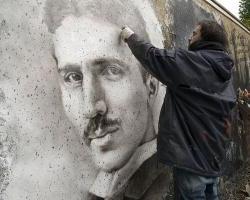An inventive genius of the 20th century, Nikola Tesla, helped bring x-rays, radio, and the foundations of modern electrical engineering into our world. He had an intensely focused mind, an amazing eidetic (image) memory, and chronic symptoms of OCD.
Born in what is currently Croatia in 1856, Nikola Tesla displayed an obsessive mind and talent for science early on, and when a young man his creative drive outshone his mental health issues. We know that as a student he got by with little sleep, learned languages rapidly, questioned the design and efficiency of existing technologies, and challenged his professors on popular scientific theories.
When Tesla emigrated to New York City in 1884, his first employer was Thomas Edison at Edison Machine Works. Tesla helped the company resolve problems with the application of direct current (DC), but resigned after a short time when he and Edison disagreed over compensation. Throughout his life Tesla's creative accomplishments were frequently followed by controversy, disappointment, or hardship. It is hard to know how much of this was related to his OCD.
Tesla developed a phobia of germs, round objects (especially jewelry), and had an obsession with the number three. He often had an urge to circle a city block three times before entering a building on that block. He counted his jaw movements when chewing food and habitually surprised dinner guests by estimating the weight of his meal before taking the first bite.
When meeting people, Tesla declined to shake hands and he had great distaste for touching hair. His lifelong celibacy and tendency to seclude himself might have been OCD related, though Tesla claimed this behavior enhanced concentration on his various experiments.
In later years, Tesla’s OCD symptoms overshadowed his innovation, yet he had already created a lasting legacy. After leaving Edison Machine Works Tesla worked for George Westinghouse and helped establish the safety and reliability of alternating current (AC) power.
Tesla’s work has influenced fluorescent lighting and wireless communication. When Guglielmo Marconi sent the initial trans-Atlantic radio signal to Newfoundland from England, he used 17 of Tesla’s 112 patents. However, Tesla’s intellectual contribution to radio communication wasn’t recognized until after his death in 1943.
I do not think there is any thrill that can go through the human heart like that felt by the inventor as he sees some creation of the brain unfolding to success...such emotions make a man forget food, sleep, friends, love, everything. ~ N. Tesla
Today, Nikola Tesla is the namesake of a cutting edge electric car company and the subject of many comics on The Oatmeal (theoatmeal.com)—it would be interesting to know Tesla’s reaction to that.
Source: International OCD Foundation;, School Psychologist Files
Photo credit: thierry ehrmann / flickr



